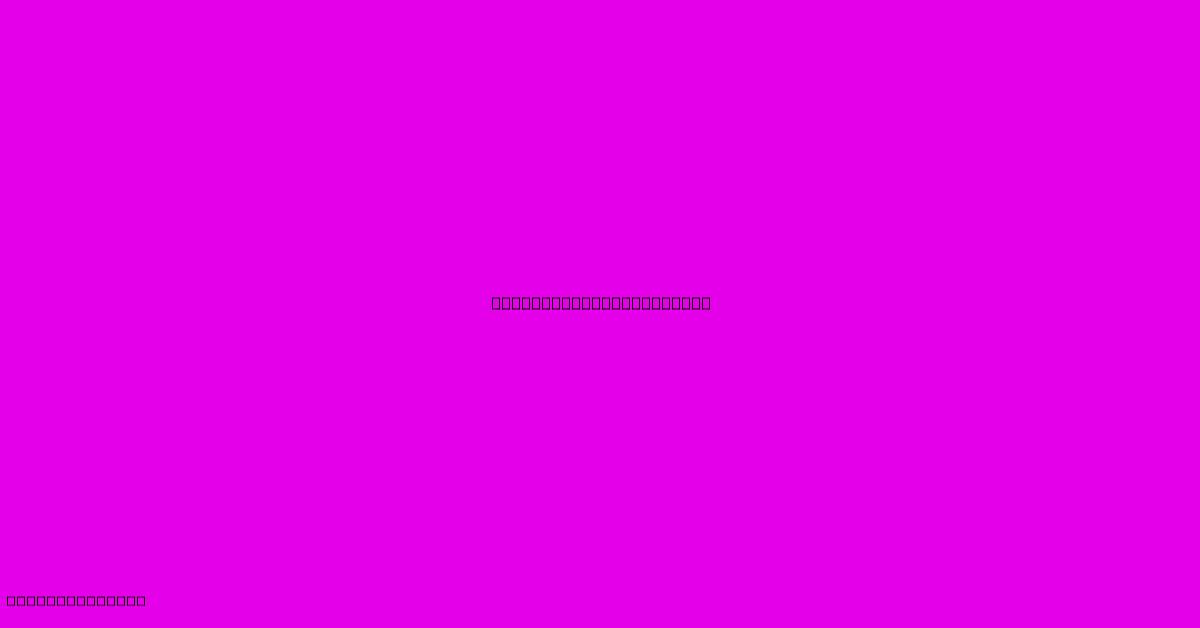Rectifier Technologies

Discover more detailed and exciting information on our website. Click the link below to start your adventure: Visit Best Website mr.cleine.com. Don't miss out!
Table of Contents
Rectifier Technologies: A Deep Dive into Power Conversion
Rectifier technologies are fundamental to modern electronics, playing a crucial role in converting alternating current (AC) power from the grid into direct current (DC) power needed for various devices and systems. From small electronics to large industrial applications, rectifiers are essential components ensuring the smooth and efficient operation of countless devices. This article explores the different types of rectifier technologies, their advantages, disadvantages, and typical applications.
Types of Rectifier Technologies
Several types of rectifiers exist, each with its own characteristics and suitability for specific applications. The most common are:
1. Half-Wave Rectifier:
- Mechanism: This simplest form of rectifier uses a single diode to allow current flow in only one direction. During the positive half-cycle of the AC input, the diode conducts, allowing current to flow to the load. During the negative half-cycle, the diode is reverse-biased, blocking current flow.
- Advantages: Simple circuit design, low cost.
- Disadvantages: Produces significant ripple voltage, low efficiency, delivers only half of the input power. Not suitable for applications requiring smooth DC.
- Applications: Simple battery chargers, low-power applications where high efficiency is not critical.
2. Full-Wave Rectifier:
- Mechanism: Utilizes two diodes (center-tapped transformer) or four diodes (bridge rectifier) to utilize both the positive and negative half-cycles of the AC input. This results in a more continuous DC output compared to the half-wave rectifier.
- Advantages: Higher average DC output voltage, better efficiency than a half-wave rectifier, less ripple voltage.
- Disadvantages: Still produces some ripple voltage, requires more components than a half-wave rectifier.
- Applications: Power supplies for various electronic devices, battery chargers requiring smoother DC output.
3. Bridge Rectifier:
- Mechanism: A specific type of full-wave rectifier using four diodes arranged in a bridge configuration. This design eliminates the need for a center-tapped transformer, making it more compact and cost-effective.
- Advantages: High efficiency, compact design, no need for a center-tapped transformer, widely used in power supplies.
- Disadvantages: Produces some ripple voltage, reverse voltage across the diodes can be twice the peak input voltage, requiring diodes with appropriate voltage ratings.
- Applications: Most common rectifier type found in many power supplies, chargers, and electronic devices.
4. Controlled Rectifiers (Thyristors):
- Mechanism: Uses thyristors (like SCRs, TRIACs) to control the output DC voltage and current. These devices allow for precise regulation and switching of the DC output.
- Advantages: Variable output voltage and current, allows for precise control and regulation of power.
- Disadvantages: More complex circuitry, requires control signals, switching losses can affect efficiency.
- Applications: Motor speed control, DC motor drives, high-power applications requiring precise control, power factor correction.
5. Three-Phase Rectifiers:
- Mechanism: Used for higher power applications, these rectifiers utilize three-phase AC power to produce a higher and smoother DC output. They can use diodes or thyristors.
- Advantages: Higher output voltage, significantly reduced ripple voltage, higher efficiency than single-phase rectifiers.
- Disadvantages: Requires three-phase AC power, more complex circuitry.
- Applications: High-power industrial applications, large power supplies, high-voltage DC transmission.
Filtering and Smoothing
The output of rectifiers typically contains a significant amount of ripple voltage—a fluctuating component superimposed on the DC output. To reduce this ripple, filters are used. Common filter types include:
- Capacitor Filters: The simplest filter, consisting of a capacitor connected in parallel with the load. The capacitor stores charge during the peaks of the rectified waveform, smoothing the output.
- Inductor Filters (Choke Filters): Utilize an inductor in series with the load, smoothing the output by opposing changes in current.
- LC Filters: Combine inductors and capacitors for improved filtering effectiveness.
Choosing the Right Rectifier
Selecting the appropriate rectifier depends heavily on the application's specific requirements:
- Power requirements: The amount of DC power needed determines the rectifier's rating.
- Output voltage and current: These dictate the rectifier's design and components.
- Ripple voltage tolerance: The acceptable level of ripple voltage influences the choice of filtering.
- Control needs: The requirement for variable output voltage affects the choice between uncontrolled (diode) and controlled (thyristor) rectifiers.
- Cost and efficiency considerations: Trade-offs between cost, efficiency, and complexity are crucial factors.
Rectifier technology continues to evolve, with advancements focused on improving efficiency, reducing ripple, and enhancing controllability. Understanding the various types of rectifiers and their characteristics is essential for engineers and designers working with power conversion systems.

Thank you for visiting our website wich cover about Rectifier Technologies. We hope the information provided has been useful to you. Feel free to contact us if you have any questions or need further assistance. See you next time and dont miss to bookmark.
Featured Posts
-
Advanced Technology And Research Corporation
Jan 02, 2025
-
Genius Technology
Jan 02, 2025
-
Indiana Institute Of Technology Acceptance Rate
Jan 02, 2025
-
Cranial Technologies Locations
Jan 02, 2025
-
Sanborn Technologies
Jan 02, 2025
